Text
Fish for a living - 11/07-19
In a small village you get to meet and know people if you spend some time there. Many tourists drop by one day in Oqaatsut and travel back to Ilulissat the same day, which looks weird when you actually live here. They are not a part of your life, but they just look at it from the outside.

On the dock, I met a fisherman and hunter, Steen, and asked him if I could spend some time with him. He was preparing for long line fishing and baited the hooks with capelin. His father was a fisherman, too, and Steen shot his first seal when he was nine years old and caught his first Beluga whale when he was fourteen. He said he tried to work on land for a while, but it did not work out for him - he belonged to the sea.
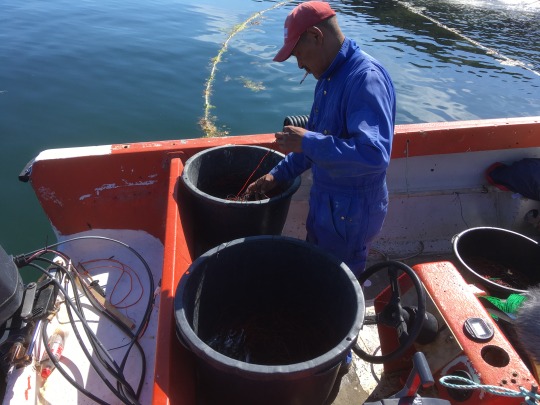

Long line fishing takes patience since there are so many hooks to bate, and while I watched, another hunter arrived at the dock by boat. He pointed at the back end of the boat, and to my surprise, I could see a dead seal lying there - I believe it was a ringed seal. He had recently shot it and was about to skin and butcher it.

I gave Steen a break from all my Norwegian-Danish questions, and watched and recorded the sounds of the butchering of the seal. I was fascinated by how fast he did it, but he had probably done it his whole life. He skinned it, and there was literally a bath of blood and fat right in front of me, but all I could think of was to record the sounds the best I could. Suddenly it was all over, and meanwhile a local man had come to buy some of the meat. What was left was a pile of blood and some flies flying over it.
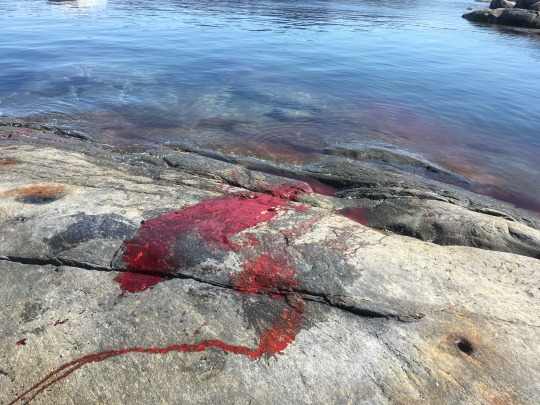
I went back to Steen who was still bating the hooks, but he was soon finished and I joined him when he put out the line.

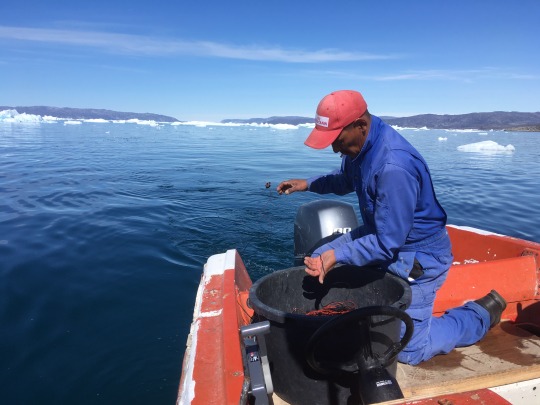
We had to wait for five hours before we could pick it up again, but I had to come along to see if “we” got any fish, and at 8 p.m. we went out to bring the fish home. In the beginning there was not much to see, and Steen wondered if he was wrong about the currents, but soon enough the big fish was dragged into the boat. There were huge wolffish, Atlantic redfish, cod, halibut and also a bunch of sea rays which were thrown into the sea again. He used a winch to drag them up, pulled out the hooks and threw the fish in either the “dog-bucket” or the “human-bucket”. If the fish were too small, they became dog food, but too small for Steen was big in my eyes.
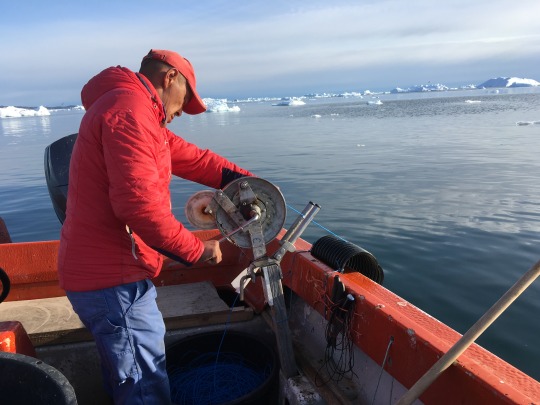

Four hours later and past midnight, we were finished and got back. I was not aware of the time as the sun here never sets, but I must admit I had begun to feel a bit cold in the Arctic night. To me it looked like a good catch, but to him it was mediocre. He does this for a living and would have wanted more of the most expensive fish: halibut. I asked him if I could buy a small cod from the “dog-bucket” to have for dinner, but that was unacceptable, and he gave me a huge cod from the “human-bucket” for free. Qujanaq, Steen! I had cod for dinner the rest of the stay.
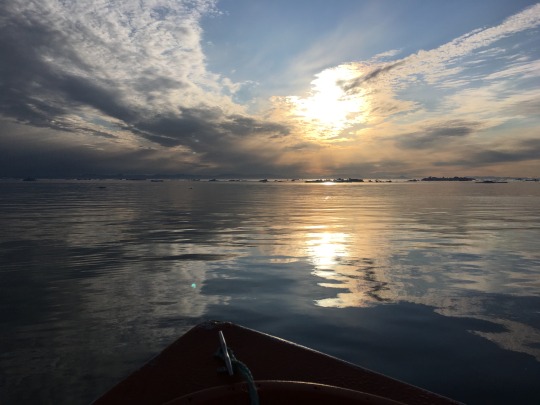
The most memorable sounds from this experience was the significant winch, the communication radio with other boats nearby, the air which came out of the redfish and a picture stuck in my head of Steen hitting his knife twice on the side of the boat, followed up by an ocean of seabirds’ escape in a second. Pictures worth keeping.
0 notes
Text
Quiet life - 10/07-19
The truth is that I am back in Oslo with internet connection for more than 30 minutes, but let us pretend I am still in Oqaatsut with a few more updates.
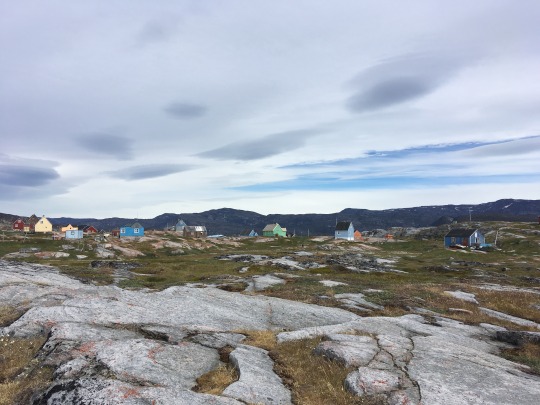
It has been a couple of calm days in Oqaatsut, a small coastal village with 27 inhabitants. I have rented a house and it feels like I am beginning to live like a true Greenlander. The biggest change is that there is no water or pipe systems in the houses here, which means water becomes a bigger part of your daily routine. In my daily life back home, I do not even think about it - it is just there. Here, you have to pick up the water you need from a water house which uses a reverse osmosis system - removes the salt from the ocean water and makes it drinkable. Sounds like magic to me.
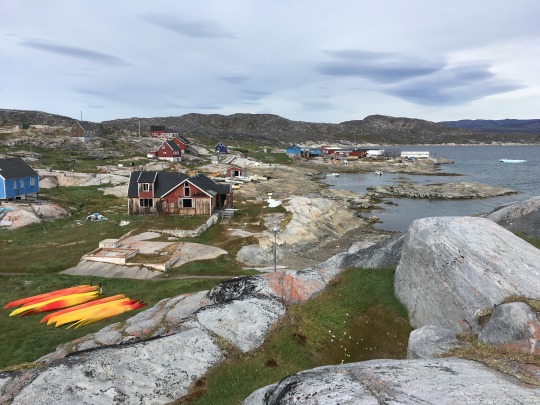
When you need hot water to wash up or do the dishes, you boil it, and bring the used water outside again. In addition, obviously, there is no shower or water closet facilities - just a black plastic bag.
Besides the change in the daily routines, I have kept on with my recordings. The first day there was a lot of wind which made the whole house howl and scream in the most incredible ways. The wind and the dogs, which lived just outside my house, sang harmonies together that day. It was quite soothing to listen to, and I think I fell asleep twice while recording.
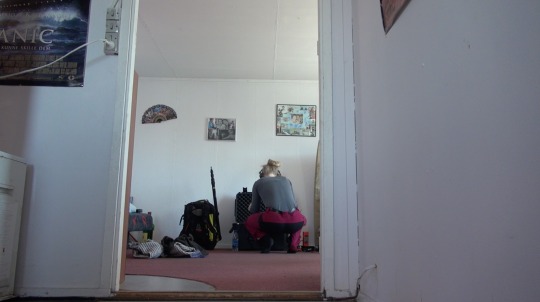
When the wind had settled the next day, I brought my hydrophones and a couple of Lom Usi Pro mics to do some underwater recordings. I have borrowed the Usi’s from my kind friend and colleague Gisle Tveito - to experiment with. I have wrapped them in lube free condoms and tape and they work well to a certain point.
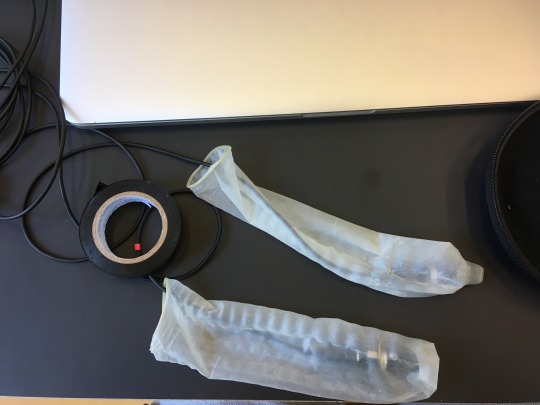
The sound of them are closer to the human ear than the hydrophones, but I cannot get them further down than the length of the condoms. Even that was not enough this time. I thought it all went well, the recordings sounded good and I got home, unwrapped them and tested them to be sure. It turned out that one of them had a much lower signal than the other, and also had a noise to it(sorry, Gisle). I guess that is what happens when you experiment, but I will definitely need more than condoms next time.
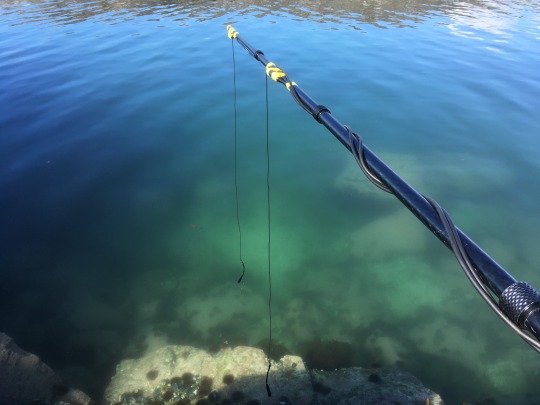
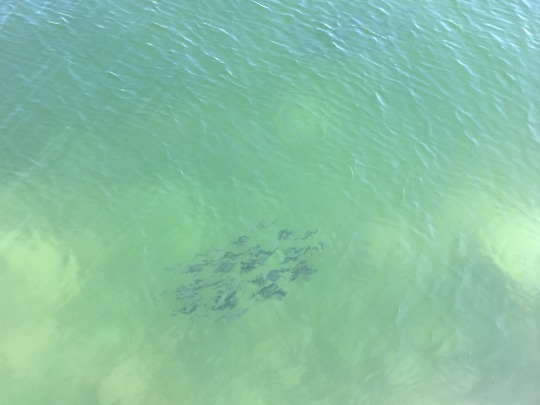
Later in the evening, I had to get out in a boat somehow, not with the Usis, may they rest in peace, but with the Aquarians. I saw a couple who arrived in a boat and paddled their way to land in a small rubber boat. Perfect for me, I thought, and I asked them if I could borrow or rent it. They said they did not need it for the rest of the evening and kindly lent it to me. People are very helpful here.

The sun shone on the dead calm surface, and I broke it when I gently paddled my way out. I softly sank the hydrophones down and put on my headset. The contrast was striking. Underneath there was so noisy compared to what I saw and heard above the surface; a lot of bubbling, bangs from the icebergs echoing in the mountains around and once in a while a boat drove past. I guess the life down there never stands still.

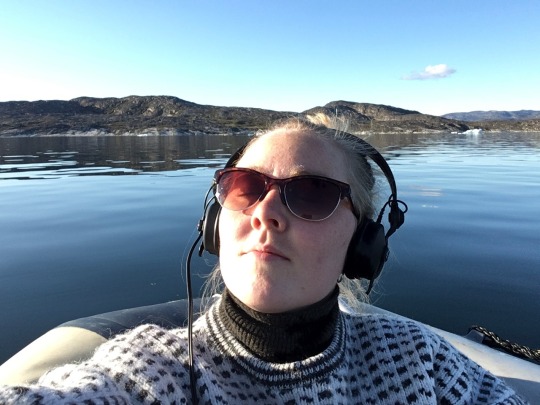
1 note
·
View note
Text
Dreaming of whales - 01/07-19
Yesterday was my last day on the Disko Island and I had one last mission: to record whales.
I had seen some humpback whales around Qeqertarsuaq the days before. They migrate to the cold north in the summer.
Unfortunately, the weather was not on my side, which had become the case around here. I walked out to one of the small islands outside town, but the wind was too strong. I tried anyway and actually saw a humpback whale in the distance, but the wind blew the wrong way and I could not hear a thing. I stayed there anyway and caught a lot of waves and some birds.
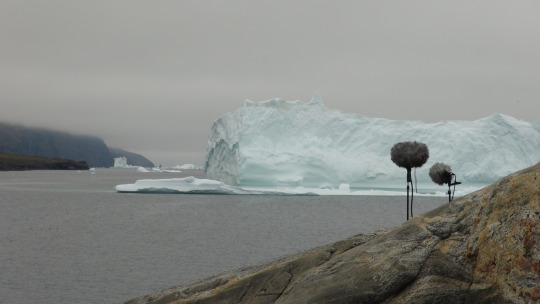
After dinner, I decided I had to make one last try to capture these spectacular animals. To my advantage, the wind had settled, and I walked out to the black beach around where I had seen the whale earlier on the day.
When I got to where I could get an overview to the sea, I could not believe my eyes. As ordered, there were two big humpback whales with their mouths in the air, eating.
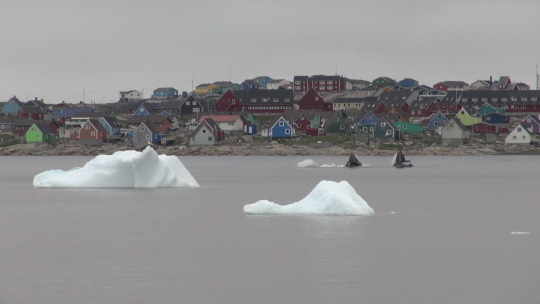
I ran with all my gear to where there was the least amount of noise - there were people fishing on the beach, kids on the football court nearby and cars driving back and forth - which was disturbing in one way, but also quite unique in another. For me, the time stopped and all I could see was the whales, but for them who could see this every other day, kept on with their affairs.
vimeo
While I recorded on the beach, a Greenlandic woman came up to me and asked me what I was doing. When I said I recorded the sounds of them, she got really excited and wondered if I recorded in the water. She told me that they whistle to each other.
I had not brought my hydrophones from the hostel, because my experience is that hydrophone recordings are better in a boat or a place where you can sink them straight down and not leave them with the waves crashing in on a stony beach.
There was something in her interest though, that made me want to at least try. I told her I could go get them and she watched my equipment while her boyfriend drove me back and forth to the hostel.

Back on the beach, I threw the hydrophones a bit out. We all listened to it, but we could not hear any whale whistling, just rocks and waves as I had predicted.
I wish I could have stayed there one more day, brought my hydrophones out in a boat and recorded them below the surface, but the time ran out. I hope there will be a second chance in another place.
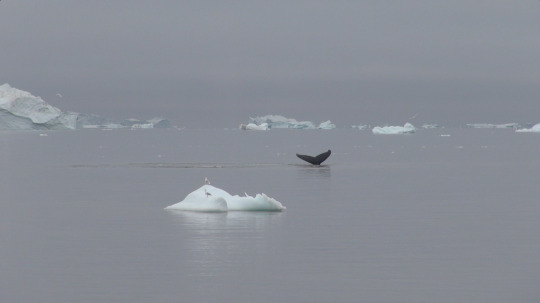
I watched and listened to the whales’ krillfest for another two hours until the tide had fallen and the wind turned. There was quite a feast they had, and I was so happy to see those huge animals just having a great time. Around half past midnight I could not see them anymore - they could probably sense that I had to go to bed to make it to the boat early in the morning.
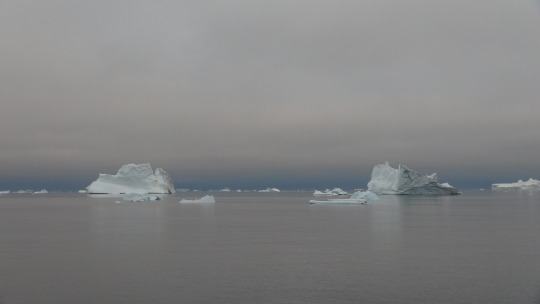
The midnight light made the last hour a dreamlike happening. Was I even awake? Did all of this really happen? I do not know, I have not dared to listen to the recordings yet, but I guess I shot these pictures...
1 note
·
View note
Text
Into the white wide open - 30/06-19
Away from the “mainland”, a couple of hours with boat in the Disko bay, you will find the Disko Island and Qeqertarsuaq in the south. The landscape of the island is younger and quite different from the mainland, and were created by volcanic activity millions of years ago.
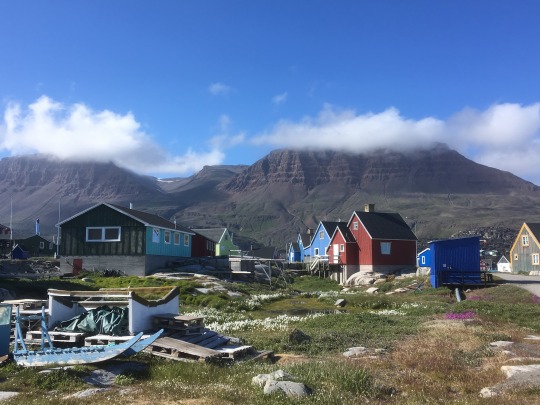
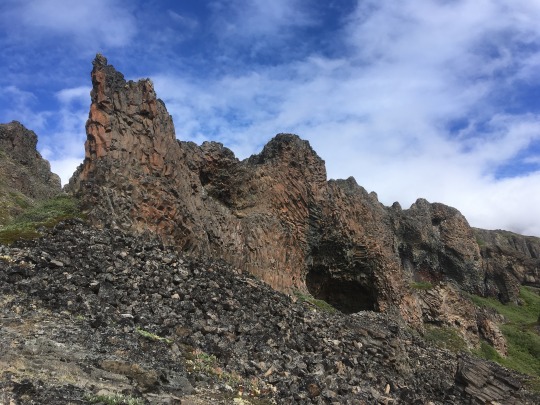
The wind blew me here because of the rumors of the only place with dog sledding in the summer. I had to experience this essential way of transportation in Greenland in the winter.
To get up to the Lyngmark Glacier was the toughest part on my trip so far. From the town by the sea there was straight up to 700 meters above sea level. I met a Danish woman in Qeqertarsuaq who knew both the people and the dogs up there, so I decided to join her. I had to limit my equipment this time because of the physical challenge, and went for the MS setup and the two small DPA’s. The less weight on my back, the better.
There was bad weather the day we planned to make it to the top, and we decided to postpone the hike to the next day, but in the evening the sun peeked out from the clouds after all. Lise was eager to get up there, and at 6:30 p.m. we began the mountain climbing and sweated and breathed our way up the steep and stony paths. In the beginning, I was not sure if I could manage, but the start was extra tough. As soon as I got warmed up, we held an even pace, and cheered up each other all the way to the top. It took us around three hours before we reached our goal, and the clock was ticking towards bedtime. Luckily, they had space for us to spend the night in the guesthouse.
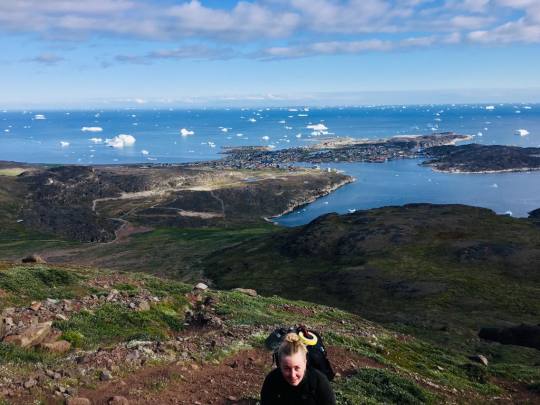
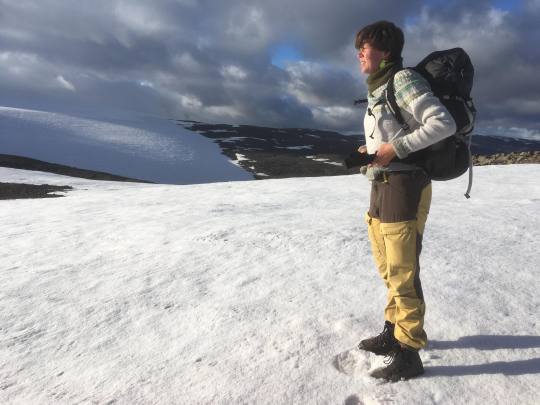
In the morning at 6:00 a.m., we went out on the glacier and started the ten-minute walk to where the dogs were tied. We could hear them howl over the icy mountains as we slowly approached.

Once we were there, I got to place the mics on the sled, and in the morning sun with no one else around, the dogs dragged us into the great white wide open. What an experience it was. No disturbing sounds from motors, just dogs breathing, the ice scraping under the skis of the sled and the cold sharp wind from the glacier blowing in our faces.

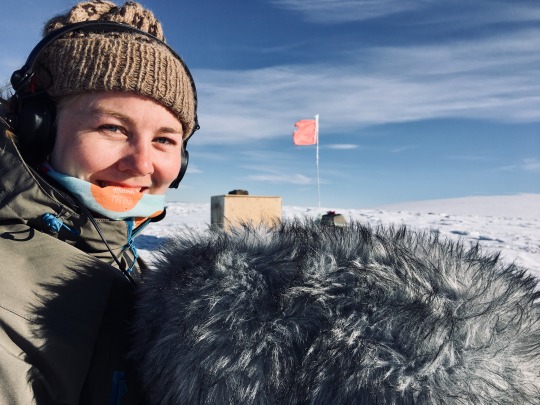
There is no doubt that this is the best way of transportation when your whole country is covered in snow and ice - and definitely the most beautiful. All the dogs that are unemployed and tied in the outskirts of the villages in the summer, earn their place in the society when winter comes to the north - they are working dogs and not pets here.
Photos by Lise Bavnshøj and me.
0 notes
Video
vimeo
A thundering sample of Eqip Sermia.
0 notes
Text
Eqip Sermia - 29/06-19
I have been away on a couple of excursions now. Into the wild without any connection to the world, like it is supposed to be out here. One of them was to the most active glaciers in all of Greenland, Eqip Sermia, which means corner of the mouth in Inuit language.

The glacier front is 3.4 kilometers wide and approximately 200 metres high, but that is only numbers on paper when it comes to this huge natural phenomenon. I found it extremely difficult to grasp the size of it. The closest I got was when I went on a hike to the moraine together with some tourists. It felt like we were right next to it, but we were still one kilometer away.

Actually, what helped me understand both the size and the distance was, surprisingly enough, the sounds. As sound travels at a much lower speed than light, we saw the calvings before we heard them, or in most cases, heard them, but then it was already too late to turn our heads around to see. They sounded like massive thunder, reverberated in your body and surely helped out with understanding how big it was.

When the others went back to eat lunch, I stayed behind with my microphone friends. The massive ice on land constantly shoved the front forward, and the glacier sounded like it was always busy. You could hear the tension, the cracking, the reactions, the movement as the powers pushed the ice forward, and on the tip of the glacier the pieces broke off and fell into the ocean - that again caused after-effects in form of big waves. Then the circle of motions repeated itself.
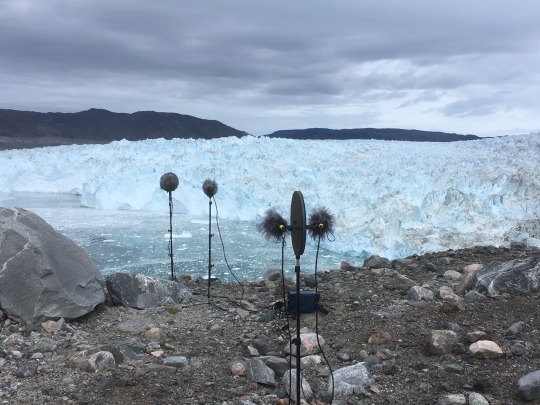
Back in the camp, which actually used to be a base camp for French explorers in the 20th century(one of the original buildings is in the picture below), the thunder was a natural part of the sound environment. In the beginning, I caught myself looking up towards the sky a couple of times to see if I could see any dark clouds, but after being there for a while, I got used to it.
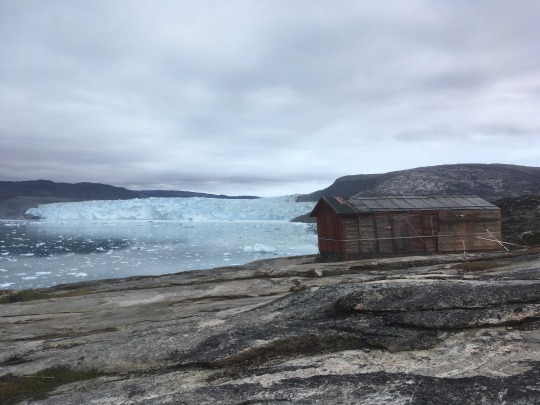
Anyhow, I have begun to understand that my starting point, Ilulissat, really is one of the main places in Greenland. Internet is still quite new here, and the smaller places do not have any type of signal when it comes to telecommunication. It seems like this is the case from now on, but I will write you on the other side!
0 notes
Photo
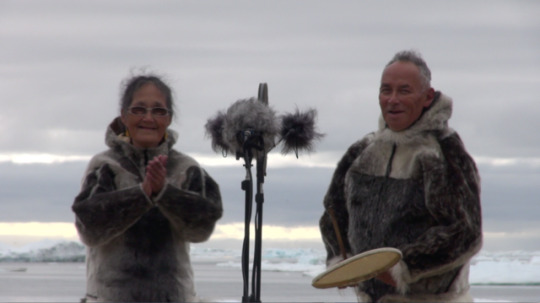
These two lovely people, Inukitsoq and Genoveva Sadorana from Qaanaaq performed the traditional drum dance for me in the midnight sun. The drum dances have a lot of history and legends in them. I could not understand what they were singing in Greenlandic, but their granddaughter was kind and explained one of them to me in Danish. It was about a woman in the North who’s son was a polar bear cub. One day the cub disappeared and the woman sang this song to him in the mountains. Her heart became heavy and began to turn into stone when she realized that the cub was killed. Later, the entire woman turned into stone, and she is still there to this day.
0 notes
Video
Here is a short sample of what it sounds like under the surface. Recorded with Aquarian H2A hydrophones.
0 notes
Text
Happy National Day, Greenland! - 21/06-19
Ilulissat is not just a town of ice, but a town of culture. Yesterday evening, I went to the art museum and experienced an incredible performance done by Jessie Kleemann. There were more beautiful art to be seen in the museum, too.
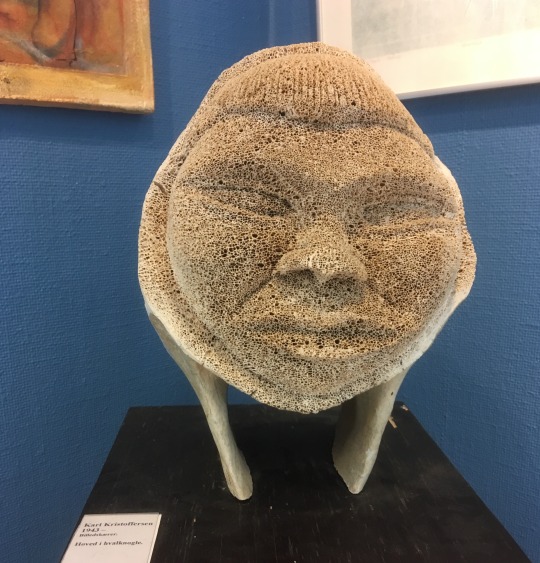
Today, on the Self-Government Day of Greenland, I wandered about town - with a couple of mics of course. I went for the undercover Chris Watson solution with a DPA stereo pair on a clothes hanger. Sometimes with the less undercover MS-setup on top. I got the chance to see a dog whipping competition and live Greenlandic polka outside the Ilulissat museum, speeches and songs in the sportshall, and even more music in the cultural house in the evening. A worthy celebration!
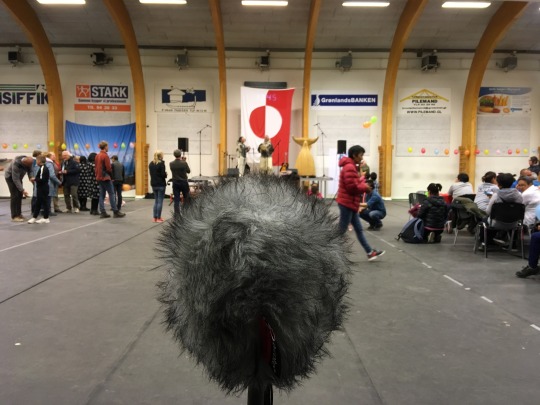
Greenland has forever been a place that explorers and visitors come to. I talked to the owner of the hostel about how Greenland used to be one of Denmark’s colonies up until 1953. They made a western society out of it, and changed it to be a capitalistic society instead of their own sustainable nature life with hunting, trading etc. They got their own self-government in 1979, but are still in the Kingdom of Denmark. Some politicians in Greenland want a full independent country, but since they are provided with regular money from Denmark, that is also a difficult choice. They need the money, and Denmark have a responsibility to not just leave the country as it is; a lot of people struggle with unemployment, mental health problems, alcohol abuse and family issues.
This is is such a sad story. Why on earth do we need the western comfortable society? Once you have it, you cannot go back. Of course you would exchange a kayak for a bigger motorboat that runs at a much higher speed without using any muscle power. But once you do, you lose something else that is not valued in money.
0 notes
Text
Arrival in the otherworld - 19/06-19
I have arrived in Ilulissat in Greenland - the main town of the worlds largest municipality, Avannaata Kommunia, an area larger than Spain. Ilulissat is located on the west coast of Greenland and has approximately 5000 human inhabitants and 2000 sled dogs they use for transport in the winter.
The reason why I wanted to go here in the first place is because it is located close to Sermermiut / the Icefjord on UNESCO’s World Heritage List. The fjord is, as the name indicates, filled with ice that comes from the Inland glacier. I remember I thought that this had to be the place to record ice in The Arctic Aurality.
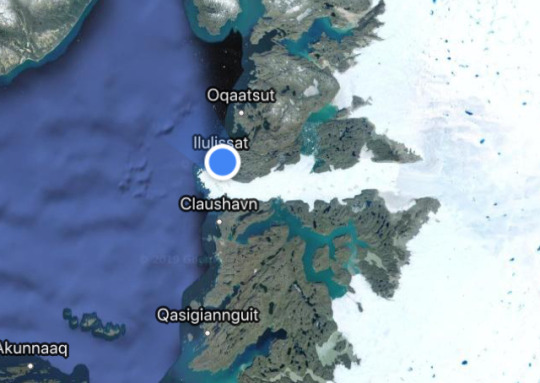
Today, early in the morning, I felt the urge to go out and record at once. Why wait when I am finally here? I packed my bag with equipment and went for a hike to Sermermiut. The sun was shining and the air stood still - I thought it might be cold here, I had put on my woolen underwear, sweater and jacket, but soon enough I was drenched in sweat and had to take it all off. No wonder why the ice melts(or sweats).
It took me about 30 minutes before this otherworldly view of ice appeared in front of me.
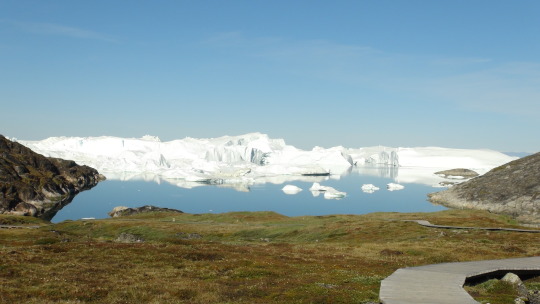
I hiked along the fjord on the marked path and even further down, close to the ice and water. Here I found some good spots to place my mics.
I brought a full Sennheiser rig with me to Greenland: The Sennheiser Ambeo VR mic, two mkh 8020 omni mics with a jecklin disk and an MS setup with mkh 50 and mkh 30. I chose Sennheiser because I know how versatile they are and how much they can handle - especially in all kinds of weather. The recorder I use is the solid Sound Devices 788T.
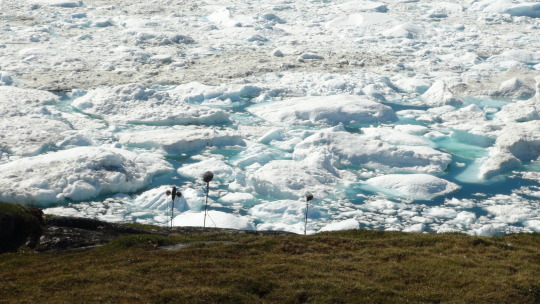
At first, it was quite calm in the fjord - the sun was shining, the icebergs slowly moving, the birds singing and the insects buzzing. Once a while the ice in the fjord rumbled or made sudden crackle sounds. I had never heard anything like it before. It sounded like an underwater war with seldom attacks.
I suddenly heard a loud and long rumble from a distance. I saw a large iceberg calving in the middle of the fjord. The whole soundscape transformed into this loud constant rumble and I just sat there and listened, unaware of what was coming next. The sounds came closer and closer and I realized that all the ice in the fjord had started to move in big waves. I had no idea how much these waves were going to escalate.
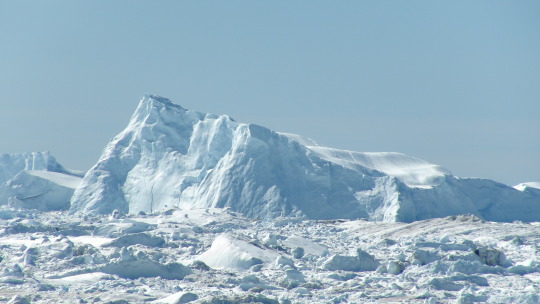
The mics were placed on a small cliff right next to the ice and water - a good placement for recording, but not if this was the last recording I was going to make on this trip. The adrenaline started to pump, and I ran down and grabbed the mics and the recorder with me in the most messy way. You should have seen it. I must have looked like an unknowing and scared little squirrel running back and forth and hoping for the best. At least that is how it felt.
The waves sounded bigger than they were. After they had settled, I went down to see how far up they had reached. The place where the mics had been was still dry, and so I ruined what could have been an amazing recording! No, I am very glad I was on the safe side in this first meeting with an unknown fjord of ice. The power of nature is not a joke - not the sound of it either.
#ilulissat#icefjord#sermermiut#greenland#soundscape#ice#sound of ice#sennheiser#sound devices#788t#ambeo#8020#ms#setup#field recording
0 notes
Text
Under The Surface - 11/06-19
Lately, I have been doing some hydrophone tests prior to my field trip. In addition to what I find above water, I want to research the landscape beneath the surface.
Since I am not that familiar with underwater recordings from before, I have tested a couple of low-cost hydrophones: The Aquarian H2A’s and Jez Riley French’s D-series hydrophones.
To compare them, the JrF hydrophones have a sharp character to them, almost metallic and sound a bit narrow in their frequency response - centered around the midrange.
The Aquarians seem wider, rounder and have more bass in them. They also have a higher signal level, but I struggled a bit with sensitive cables. I need to have a boom pole with me and be careful not to touch the cables too much. Another big plus to the Aquarians are the 15 meter long cables which gets you a bit down.

What surprises me with the underwater tests, is how much noise there is in a tiny fjord like the Iddefjord in Norway. Small sized motorboats are very loud sound pollutants, and sound travels almost five times faster in water than in air. Above the surface, I could see a boat at a far distance, but I could not hear it. When I listened to the hydrophones under the surface, I could hear the boat loud and clear.
Imagine how much noise large ships make - not to mention the seismic testing, the drilling for oil and the other industrial work that is being done in the ocean. It is a known threat to the animal life because of the disturbance in their communication frequencies.
0 notes
Text
Welcome - 06/06-19

This is a journal of The Arctic Aurality - an environmental soundscape study of the rapidly changing arctic areas.
From 18th of June to 8th of July I will do a field trip to Greenland to hunt for authentic and narrative arctic sounds, and make an auditive documentation of the area’s status quo.
You are welcome to follow my journey!
From before I have worked with sound to film, television and performing arts. Now, as an MFA student, I immerse myself in field recording, acoustic environments and how to influence people with sound.
I love that when you put on your headset to record, the world around you expands into something else. Your focus changes, it widens, and you listen carefully to what is happening in every direction around you. Right there, you might capture something unique.
0 notes